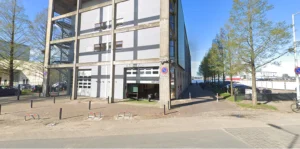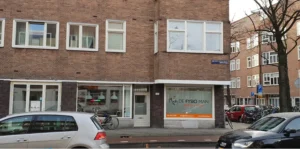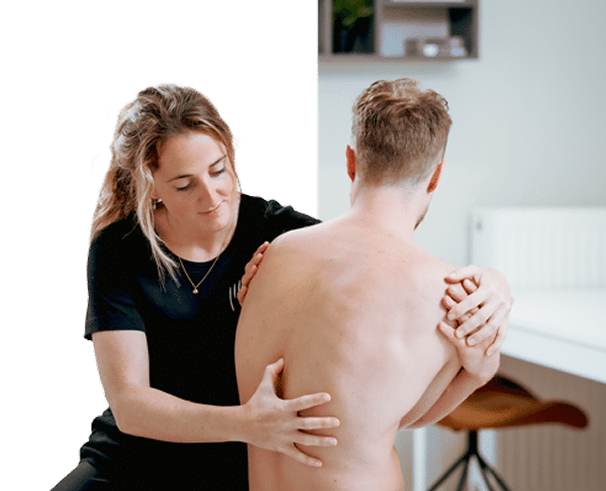Help, my lower back is bothering me!
Low back pain is a common complaint that affects a large portion of the population. Whether it occurs suddenly after a wrong move or gradually arises from stress and overuse, back pain can affect your daily life considerably. Fortunately, there are ways to reduce pain, promote recovery and prevent recurrence. In this article, you’ll read all about low back pain, from its causes and symptoms to practical solutions and professional treatments.
In brief:
- What is it? Low back pain, also called lumbago, is pain in the area between the lower ribs and the buttock crease. Sometimes the pain radiates to the legs.
- Symptoms: Searing or sharp pain, stiffness, and limited mobility. Movements such as bending and twisting may be difficult.
- Causes: Overexertion, stress, poor posture, lifting, or improper movement. Often there is no specific medical cause, but due to daily activities.
- Treatment: Keep moving, doing exercises, and adjusting your lifestyle. Professional help, such as physical therapy, can help you recover faster.
- Prevention: Maintain good posture, regular exercise, and adequate relaxation. Eccentric and core-stability exercises help prevent recurrence.

What is low back pain?
Low back pain is a common complaint that can range from mild discomfort to intense pain. The pain is in the area between the lower ribs and the buttock crease and can radiate to the buttocks or upper legs. Although lower back pain often goes away on its own, it can significantly affect your daily life.
In most people, low back pain is nonspecific, meaning there is no obvious medical cause. It may be related to an imbalance between muscles, bones and ligaments in the lower back. In less than 1% of cases, there is a specific cause, such as a herniated disc, infection, or fracture.
Symptoms
Low back pain can be experienced in different ways, depending on the cause and severity. Common symptoms include:
- Searing or sharp pain in the lower back.
- Stiffness, especially after sitting or lying down for a long time.
- Difficulty moving, such as bending, twisting or standing up.
- Radiating pain to the buttocks, thighs or legs.
- Fear of moving for fear of more pain.
Sometimes more severe symptoms occur, such as loss of muscle strength, numbness around the hips or inability to hold up urine. In such cases, it is important to contact a doctor immediately.
What can you do to fix this and prevention
The good news is that in many cases, low back pain can be reduced or even completely eliminated with the right approach. Through simple adjustments to your daily routine, specific exercises and a healthy lifestyle, you can not only alleviate your symptoms, but also prevent back pain from returning. Below are practical tips and preventive measures you can apply right away. For severe pain, it is recommended that you seek medical attention immediately.
Self-care and daily tips
- Keep moving: Try to continue your daily activities as much as possible. Movement promotes recovery and prevents muscles from becoming stiff.
- Exercises: Stretching and core-stability exercises strengthen your muscles and improve your posture. Consider exercises such as raising your knees, hollowing and arching your back, and exercising abdominal muscles.
- Adjust work posture: Provide an ergonomic workstation with a good chair and proper table height.
- Lifting: Bend your knees and keep your back straight when lifting something.
- Avoid sitting for long periods of time: Get up frequently and walk a little to relieve your back.
Preventive measures
- Sports: Swimming, walking and cycling strengthen your muscles and improve your fitness.
- Healthy lifestyle: quit smoking, eat a varied diet and maintain a healthy weight. Being overweight and smoking increase the risk of back pain.
- Stress management: Chronic stress can contribute to back pain. Relaxation and breathing exercises can help.
- Concrete prevention tip: Add exercises such as the “plank” and “cat-cow stretch” to your daily routine to strengthen your trunk stability.

What can the physio do for you
A physical therapist can help treat both mild and severe low back pain and prevent recurring symptoms. During an intake, the physical therapist examines your symptoms and sets goals with you. Treatment focuses on:
- Recovery: Through exercise therapy and guidance, pain symptoms are reduced and movement patterns are improved.
- Prevention: You will learn how to prevent back pain through better posture, lifting techniques and targeted exercises.
- Overcoming fear of movement: Physical therapists help you move with confidence, even when you are in pain.
At The Physio Man we use innovative techniques, such as exercise analysis and personalized exercise regimens, to optimize your recovery. What makes us unique is our focus on personalized care and customized treatments tailored to your lifestyle and goals.
Treatment
Treatment of low back pain at the physical therapist’s office consists of several stages:
- Intake and diagnosis: The physical therapist discusses your symptoms and performs a physical examination.
- Treatment Plan: Together with the physical therapist, you set goals such as pain reduction, improvement in mobility and return to daily activities.
- Exercise Therapy: You will learn exercises to strengthen your back and abdominal muscles, improve your posture and make your back more flexible. Think core-stability training and aerobic exercises.
- Behavior modification: The physical therapist helps you learn new movement patterns and overcome fear of movement.
- Relapse prevention: You will be given tips and advice to prevent recurrence of symptoms, such as lifting techniques and building fitness.
Massage and passive treatments are rarely used because active recovery is more effective.
Cost
The cost of physical therapy varies by practice and insurance policy. Often physiotherapy is partially or fully reimbursed by supplementary insurance. Check with your health insurer how many treatments you will be reimbursed and whether a referral is needed.
At The Physio Man, we offer transparent rates and full reimbursement support. We make sure you know exactly where you stand, so you can focus on recovery.
Do you recognize yourself in the symptoms of low back pain? Make an appointment at The Physio Man today and find out how we can help you with a personalized treatment plan. Together, we’ll work on your recovery and preventing future symptoms.
Otherwise, watch the following video for more information:
Treat your low back pain with physical therapy from The Physio Man
Are you dealing with a sore lower back? If the pain persists, don’t hesitate to make an appointment at De Fysio Man in Amsterdam. Our physiotherapists are here for you. Let’s work together for a pain-free and healthier life! View all our physiotherapies here, or make an appointment right away.
Why choose The Physio Man?
- Latest treatment techniques
- We look at the body as a whole
- 80% of our patients are complaint-free within a few treatments
- No long waiting lists
- Also open in the evening
At The Physio Man, we offer a wide range of treatment options aimed at reducing symptoms and improving quality of life. For questions or an intake consultation, contact us. Email info@defysioman.nl or call 020-3542926. Prefer to come by? Visit us at Jan van Galenstraat 301 in Amsterdam.


